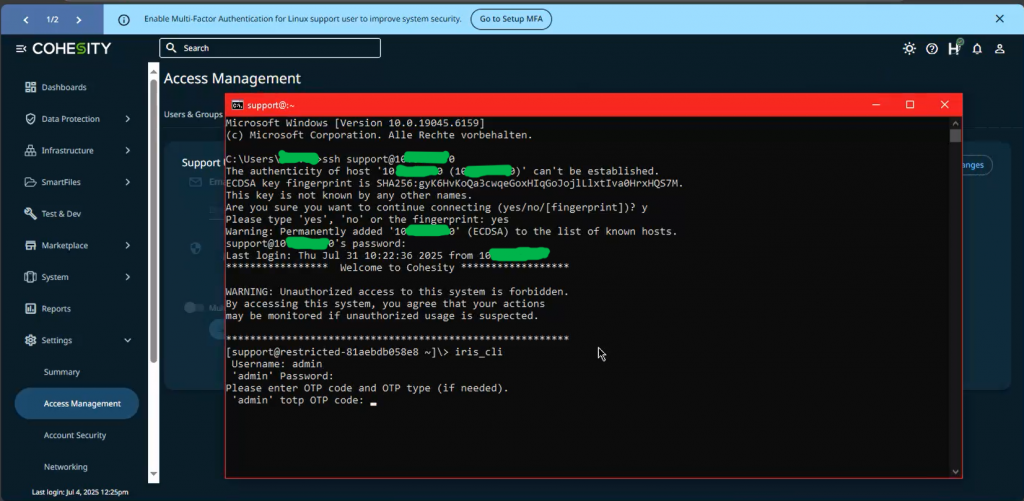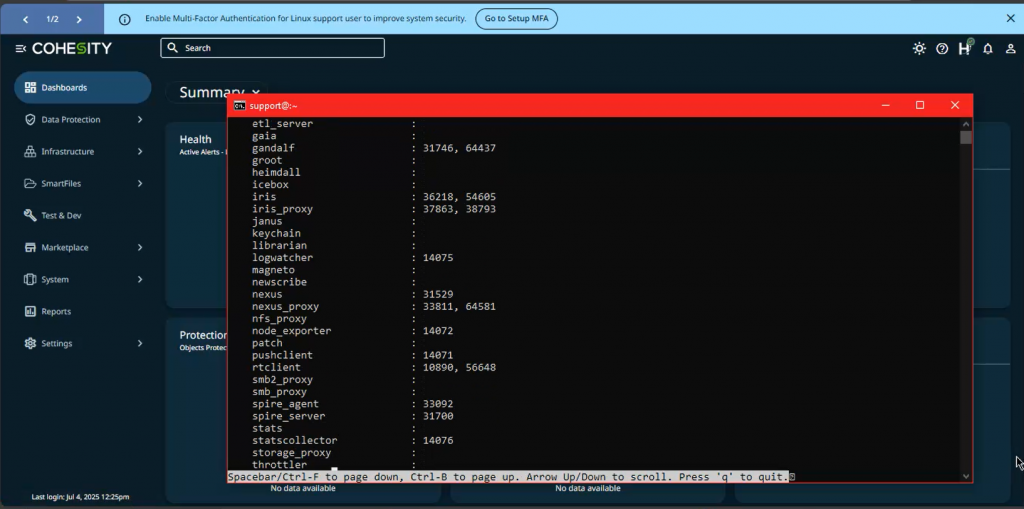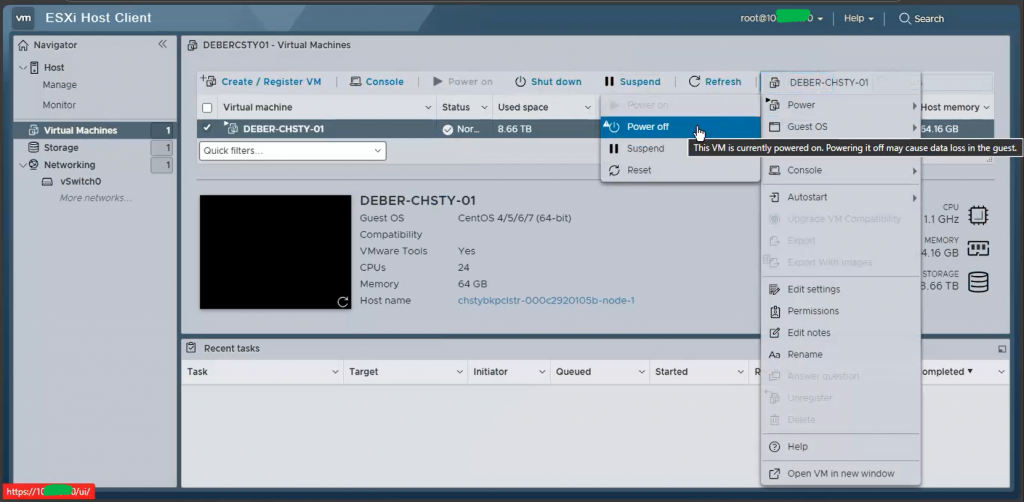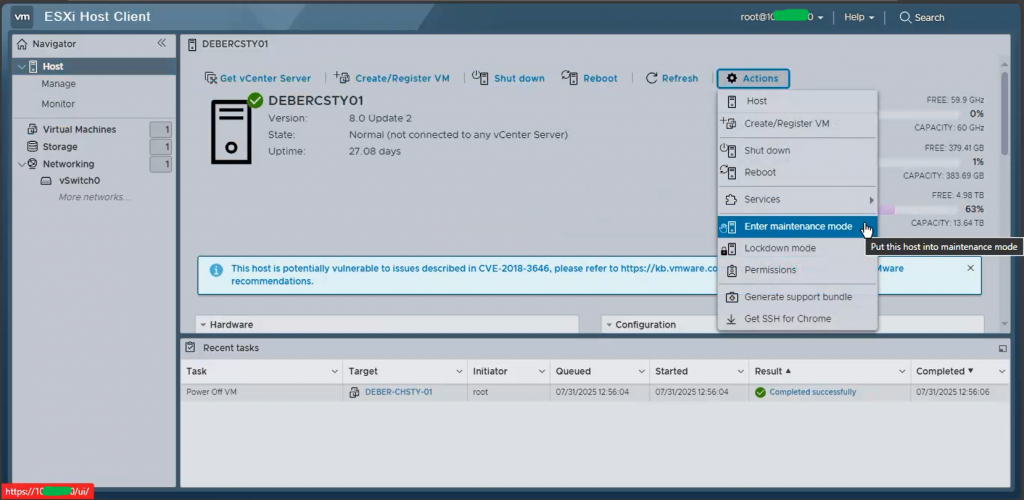When we speak about clusters, there are always a few things that need to be considered in order being able to shut down in a healthy state as well as start it up.
For example, if you operate a backup solution like Cohesity where some of the main features are scalability or high availability you definitely have to deal with some kind of a cluster architecture. In this case it is important to know how to argue with this dependency in a correct way if you have to shut down the systems.

To be able to perform a graceful shutdown you first need a specific user – the “support user”. This user can be set up in “Settings” –> “Access Management” via the Cohesity Web-UI. In most time of the daily administration work the Cohesity CLI will not used very often. According to this it is advisable to assign a more complex password and activate the multifactor authentication. Your backup is “the last line of defence” so you should handle it like that.

Once everything has been set up an SSH session to one of your many Cohesity hosts in the cluster can be established. For the SSH session you have to use the previously mentioned “support user”. By typing the command “iris_CLI” – the command line tool (officially called >>iris_CLI<<) of the Cohesity cluster will be started. To log in select an account with the appropriate authorizations.

The cluster status can first be queried within the “iris_CLI”. By entering the command “cluster stop” all cluster services are stopped (the process takes around four minutes). The individual cluster services are now stopped one by one. All the standard cluster services should be stopped except the following 12. You can view the running services with the “cluster status” command.

If the interface of the Cohesity Web-UI is no longer displayed correctly then you can shut down the virtual machine and finally the hypervisor. In this case VMware ESXi 8.0U3 is used to virtualize the Cohesity Instance.

It’s important to select “Power” –> “Power off” and not the “Guest OS”-Functions.

Select “Actions” –> “Enter Maintenance Mode” on the Host-Overview.
Finally, use the option “Shut down” to shut down the hypervisor.

In this example, a virtualized 1-node cluster from Cohesity was considered.
If several nodes are used, the process must be carried out on the hypervisor for each individual Cohesity VM.